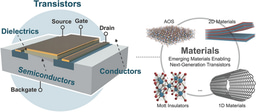Do you use your iPhone (or other smartphone or mobile computing device) in the lab? This month’s editorial notes how large numbers of scientists seem to have an iPhone or other mobile device capable of running quite sophisticated applications, or apps. Increasing numbers of these apps are targeted at biologists and some are even intended for use at the lab bench; and lists of recommended apps are popping up on blogs and other sites. Check out the links below for a sample.
22 iPhone Apps for Science Geeks – July 11, 2008
More iPhone apps for scientists – October 13, 2008
5 Bio-Related Apps for your iPhone/iPod Touch – November 4, 2008
iPhone and research – July 24, 2009
iPhone apps every biologist needs – October 9, 2009
10 Best iPhone Apps for Science Majors – December 23, 2009
Some recently released apps that don’t appear in the lists above are:
Bio-Rad PCR – Practical guidance for performing PCR and qPCR
NEB Tools – Double digest finder and restrictions enzyme finder tools
ChemMobi – Search for chemical information by name or ID. View selected properties, MSDS information and structure.
LabCal & LabCalPro – Various laboratory calculation functions molarity, moles, stock dilutions, pH & g-force
GeneticCode & GeneticCodePro – Reference tool the nucleic acid codon table and amino acid properties
But how likely is it that bench researchers will actually use an expensive personal mobile computing device like an iPhone in the lab environment? Since we are no longer in the lab ourselves, we wonder what the current generation of grad students and post-docs are doing. Is your iPhone useful in the lab? What about a similar portable device? What apps do you use?
Although there has been a lot of noise surrounding the new Android-based phone from Google we were unable to find an apps intended for use in the lab on that platform, with the exception of seemingly hundreds of scientific calculator apps. We would love to hear from any readers who are familiar with scientific apps available for platforms other than the iPhone.
Yesterday Apple announced the long anticipated iPad mobile computing device. This tablet computer can run iPhone apps in addition to providing a far larger screen and the capability to run more powerful applications than the iPhone. It seems unlikely that such a device would become as ubiquitous among scientists as the iPhone since it doesn’t double as a phone. However, it has definite advantages as a dedicated laboratory tool and is more suitable for reading journal articles than the iPhone.
Speaking of reading journal articles, the nature.com app should be available for download from the Apple app store on February 1. We’ll keep you posted.


![Highlights of the BMC Series - [October] [2025]](https://images.zapnito.com/cdn-cgi/image/metadata=copyright,format=auto,quality=95,width=256,height=256,fit=scale-down/https://images.zapnito.com/users/840921/posters/759a1fb0-b10f-491e-bdff-940b3c1a87de_medium.png)


Please sign in or register for FREE
If you are a registered user on Research Communities by Springer Nature, please sign in